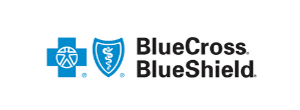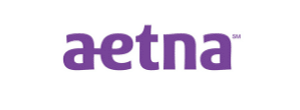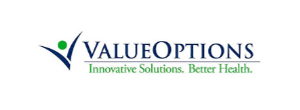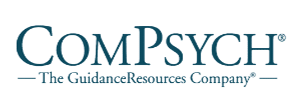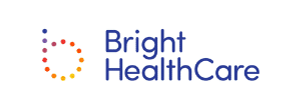Medication-Assisted Treatment Program
Medication-Assisted Treatment Program
Opioid addiction (whether it be through pain relievers, heroin, or fentanyl) help is most effective when the right tools are used. For many clients, Southeast Addiction Center Tennessee’s Medication-Assisted Treatment Program in Nashville is the best defense that they can have against withdrawal and continued opioid substance abuse.
This approach to opioid use disorder represents a sea change in addiction treatment and has given new hope to thousands. We primarily use naloxone and Vivitrol within our facility, but other options such as buprenorphine or methadone are available from other providers.
Our Medication Assisted Treatment (MAT) Program is helpful for many people who need to overcome opioid addiction. With so many different available treatment programs, it can be difficult to know whether or not you need a MAT program.

Our Medication-Assisted Treatment Program
Medication Assisted Treatment Program, also known as the MAT program, is a type of opioid treatment program that uses a combination of prescription medications and counseling to help people continue their recovery. Research has shown that MAT programs are effective for overcoming addiction and building a recovering lifestyle.
People should use a Medication Assisted Treatment Program early in their recovery. MAT drugs can help to ease cravings and reduce the risk of relapsing. When someone uses opioid blockers, the risk of relapsing reduces even more.
If you are struggling with an addiction, you should reach out to our MAT team now. Talking about your addiction, history, and other details of your life can help our team better structure your treatment plan. Not everyone will need the same medications or dosage. The treatment plan we make for you will meet your individual needs.

Vivitrol Injections
Vivitrol is a brand name for the medication naltrexone. It is an opioid antagonist medication used in the treatment of alcohol and opioid dependence. It works by blocking the effects of opioids and reducing cravings for alcohol and opioids. We typically give clients monthly injections.
Vivitrol is also the only FDA-approved medication that is currently out there for opioid abuse and the treatment of opioid withdrawal. It offers few side effects and can help prevent the continued use of opiates.

Naloxone
Naloxone is a medication used in the treatment of opioid overdose. In the context of Medication-Assisted Treatment (MAT), naloxone may be prescribed as a component of a comprehensive opioid addiction treatment program. Naloxone is an opioid antagonist, meaning it works by reversing the effects of opioids and blocking the pleasurable effects of these drugs. This takes away the incentive (high) to use opioids.

A Safe Treatment Option
Many people try recovering from addiction on their own. However, the risk of relapsing is so high because the process of overcoming addiction can be painful and challenging. Research shows that Medication Assisted Treatment Programs combine various medications to ease withdrawal symptoms and help with recovery. The medications given are proven to be safe for recovery from drugs or alcohol.
With the help of our treatment teams and MAT programs, we can provide you with a plan that makes the recovery process as easy and painless as it possibly can be. Some programs can help you to be more comfortable while getting sober and when recovering from an addiction. Our Medication Assisted Treatment Program is a great choice. It is a safe way for you to overcome addiction and build on your recovery.
Our treatment facilities offer access to treatment providers and treatment services that will both meet your needs and provide you with the utmost comfort while getting sober. We work with the best providers to ensure that our substance abuse treatments through MAT are safe, successful, and effective.
A MAT Program Can Reduce the Risk of Overdose
If people attend an inpatient treatment program, they usually go 30 to 90 days without using any drugs. If they relapse when they are home from treatment, or when they transition to a partial hospitalization program or IOP, their risk of overdosing is higher than before they went to treatment. The reason for this is that their body has been without drugs for a significant amount of time so their tolerance has dropped significantly. The body does not know how to react to the drugs now.
This is one of the reasons that MAT programs have helped so many overcome drug addiction. When taking these prescribed medications, you won’t experience the cravings that often lead to a relapse, or those cravings will be reduced and more manageable. This allows you to focus more of your time and efforts on your recovery plan and less time trying to escape those cravings.
If you are struggling with substance use, this might be the best type of program for you. If you aren’t sure whether to enroll in this treatment, you can call today. Speaking to someone at the MAT program might help you determine if this treatment will work for you.
Improving Your Social Life
The addiction recovery process can be tough. When dealing with cravings and withdrawal symptoms, you may find it challenging to get out of bed. Some people who are recovering from addiction do not even want to leave their houses.
However, if you attend our Medication Assisted Treatment Program in Nashville, you can receive help with your cravings and withdrawal symptoms while also being surrounded by other individuals struggling with the same substance use disorder. You will be working with a treatment coordinator, doctor, and other medical personnel to determine which medications work best while attending treatment with other clients.
The medications our team prescribes can help you to manage your life better. Your social life will be notably better, as well. The reasons for this are:
- Fewer cravings will mean having more energy to do activities and go to events
- Having less discomfort means more motivation to hang out with friends
- Being able to handle your recovery better allows you to build stronger relationships with friends and family members
- Improving your overall mental health, allowing you to enjoy your life and those around you
As you can see, the MAT program can benefit your social life in numerous ways. Now that you know this, it may motivate you to start this program sooner.
Reducing the Risk of Recovery-Related Issues
Many people have trouble with withdrawal symptoms, cravings, and other obstacles in their recovery. These troubles especially happen when trying to overcome addiction by themselves. If this happens in your recovery, you may be less likely to commit to the process. It does not have to be like that. You can turn your life around.
Our Southeast Addiction Center team wants to help you stick with your recovery. MAT drugs can make you more comfortable. The more comfortable you are, the more emotionally, mentally, and physically stable you will be in your recovery. Coupled with the behavioral health programs we offer, you will be more likely to remain sober long-term rather than falling back into alcohol or drug abuse.
Not sure whether the benefits are worth it to attend a MAT program? Do not hesitate to reach out to our team. We can talk to you more about how the medications we give can help reduce the risk of recovery-related issues. After our conversation and assessment of your situation, hopefully, you will better understand the process and benefits of MAT.
Getting Help
The MAT program is an evidence-based option that fits the needs of many people who have an addiction, and it can provide you with the best options for long-term recovery. It can help with withdrawal symptoms, cravings, and other recovery-related issues.
Do you or your loved ones need to buy yourself some time to stay sober and continue the path of recovery? If so, our Medication Assisted Treatment Program in Nashville, TN can help. Our team believes that everyone can be successful in their recovery. It is just a matter of finding the recovery program that fits your needs. If MAT does not happen to be the right fit for you, do not worry. We are here to help everyone find the recovery program that will work best for them, whether that be through the use of medications or behavioral therapy.
Our Programs

About Us




